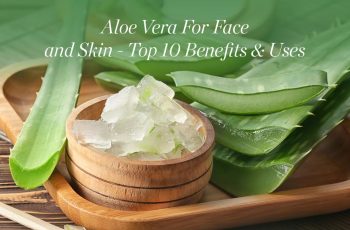
How do Polyhydroxy Acids (PHA) Benefit the Skin?
If you are into skincare then chances are your daily routine contains a selection of active and potent ingredients raging from AHAs, such a glycolic acid, BHAs, retinol and hyaluronic acid. Sure, it can be slightly mind boggling at times, but once you have taken the time to find the right routine for you and your skin there is no turning back.
This leads me onto one of the most recent beauty buzz word that has gained some popularity in the last year, PHA, short for polyhydroxy acids, yep there is a new group of acids in town! But what exactly is different about these acids compared to any others we have used before? How do they benefit the skin? Today is the day we find out more about them, you never know, they could be something your routine has been missing!
What are polyhydroxy acids?
Polyhydroxy acids are chemical exfoliants that contain similar properties of Alpha hydroxy acids (AHAs) and Beta hydroxy acids (BHA) but are considered the second generation of facial acids. The most common found are galactose, lactobionic and gluconolactone acid. PHAs work on the outer layer of the skin exfoliating away the build-up of dead skin cells that are on the surface and help to restore the skin’s overall tone, texture and glow. By removing the dead skin cells you will find that other skincare products, such as serums, when applied to the skin will be more effective and show quicker results. Rich in antioxidants and the ability to aid the production of elastin levels and collagen in the skin PHAs are also able to fight off any free radical damage and premature ageing to the skin.
What does PHA do for your skin?
If you have found your skin to be too sensitive to use other chemical exfoliants in your routine, then PHA may be the missing piece! Known for having a gentle approach to skin exfoliation many with sensitive or very dry skin benefit from skincare products containing PHAs. The main benefits of polyhydroxy acids are;
Gentle enough for sensitive and very dry skin types to use
Can rid the face of dead skin cell build-up that can make the complexion look dull, grey with flaky areas of skin
Sloughed away the barrier of skin cells allowing any other products, such as serums and oils to penetrate quickly and more effectively into the skin
Can help to stimulate the production of collagen and elastin levels in the skin aiding anti-ageing benefits
Enriched in antioxidants that can help combat any free radical damage such as sun exposure, pollution and other environmental aggressors
Gentle enough to not cause photo-sensitivity that can make the skin susceptible to UV damage.
Contain humectants properties to help lock in moisture to the skin
There are just some of the main skin benefits you will find when using PHAs, there are many similarities to AHAs and BHAs however there are some important and impactful differences between these skin ingredients that I will cover now.
How are PHAs different from AHAs and BHAs?
The main difference between PHAs compared to AHAs and BHAs is their molecule size. Unlike some popular acids such as salicylic and glycolic acid PHAs have a very large molecule size, this means they are unable to penetrate too far into the skin. By focusing on the outer layers of the skin PHAs do not cause any irritation or reaction that is often a side effect of AHAs and BHAs, especially when used on a skin type that is too sensitive. With PHAs working without disturbing the deeper layers you will also find that sun exposure will not cause the same level of damage to the skin that can frequently happen when applying AHAs and BHAs. We do, however, still recommend applying a daily SPF 30 to ensure the skin is fully protected from UV damage and signs of premature ageing.
If you are wanting to know more about how the other chemical exfoliants work on your skin, you can check out our guide on the skincare benefits of AHAs and BHAs.
How often should you use PHA?
Although they are considered gentle giants, PHAs are still chemical exfoliating acids, and should be introduced into your routine in the correct way. If you have a particularly sensitive skin type it is advisable to perform a patch test for 24 hours after you have consulted your GP or dermatologist. To start with try using PHAs three times a week in the formula that best suits your routine, such as face cleanser, toner, serum etc. Once your skin has built a tolerance you can use them every day if there are no signs of irritation, remembering of course, to not overuse any exfoliating product as this can lead to the skin becoming stripped of vital oils.
Oily and blemish-prone skin types may benefit from switching their chemical exfoliating toner to one containing PHAs due to its gentle approach and healing properties which will keep the clarity of your complexion, without being too harsh for the skin. Mixing PHAs with other more potent skin ingredients such as retinols, AHAs and BHAs should also be carried out with caution to avoid over stimulating the skin resulting in an overproduction of sebum causing an imbalance to the skin barrier. This imbalance can result in spots, signs of ageing, uneven skin tone and other common skin concerns. Once you have the best cocktail of ingredients you will find your skin will really look its best.
Are PHAs right for my skin?
As previously mentioned, sensitive skin types will truly benefit from PHAs, due to the larger molecule size leading to gentle exfoliation you will find them a great alternative to their more potent cousins AHAs and BHAs. Very dry, flaking and dehydrated skin types will also find the humectants properties of PHAs will help attract water from the surrounding area and lock in moisture to the skin keeping it balanced and calm. Any concerns with eczema and rosacea flare-ups are also known to treated with the help of polyhydroxy acids. If you are finding it hard to figure out exactly which skin type you have, check out our guide to the 4 most common skin types over on the blog.
It is quite remarkable how many benefits PHAs carry and help with all skin types, quite a rare find when it comes to skincare ingredients, especially chemical exfoliants. It makes you wonder how you ever had a daily routine without them.


